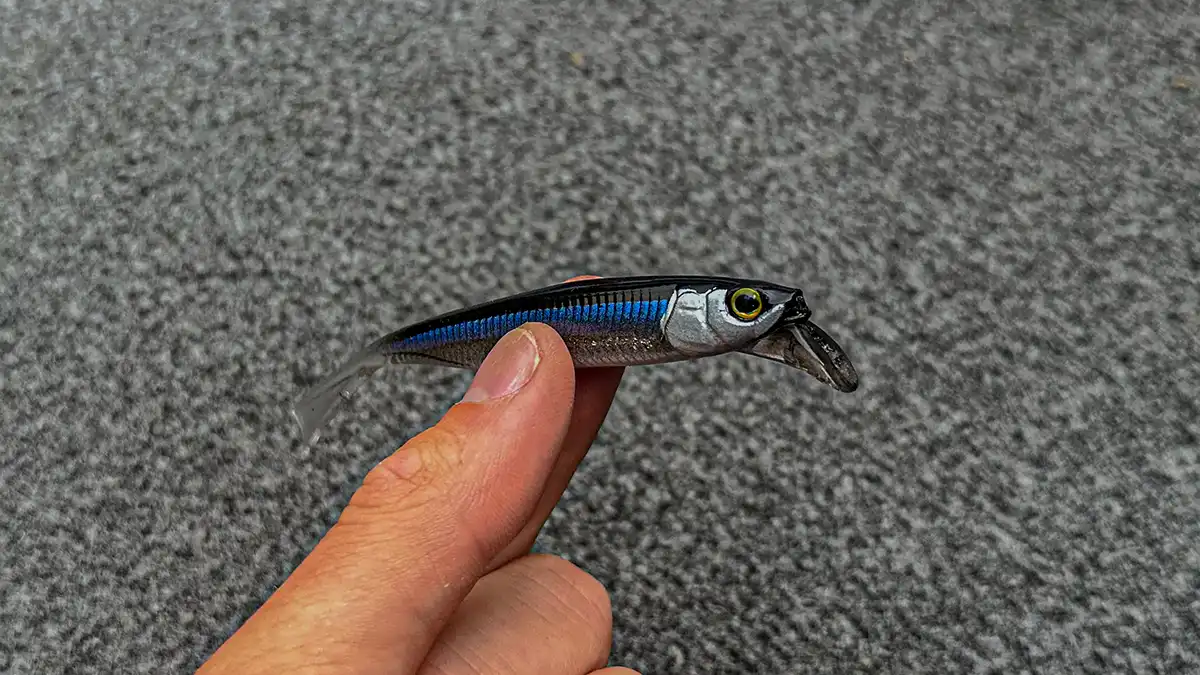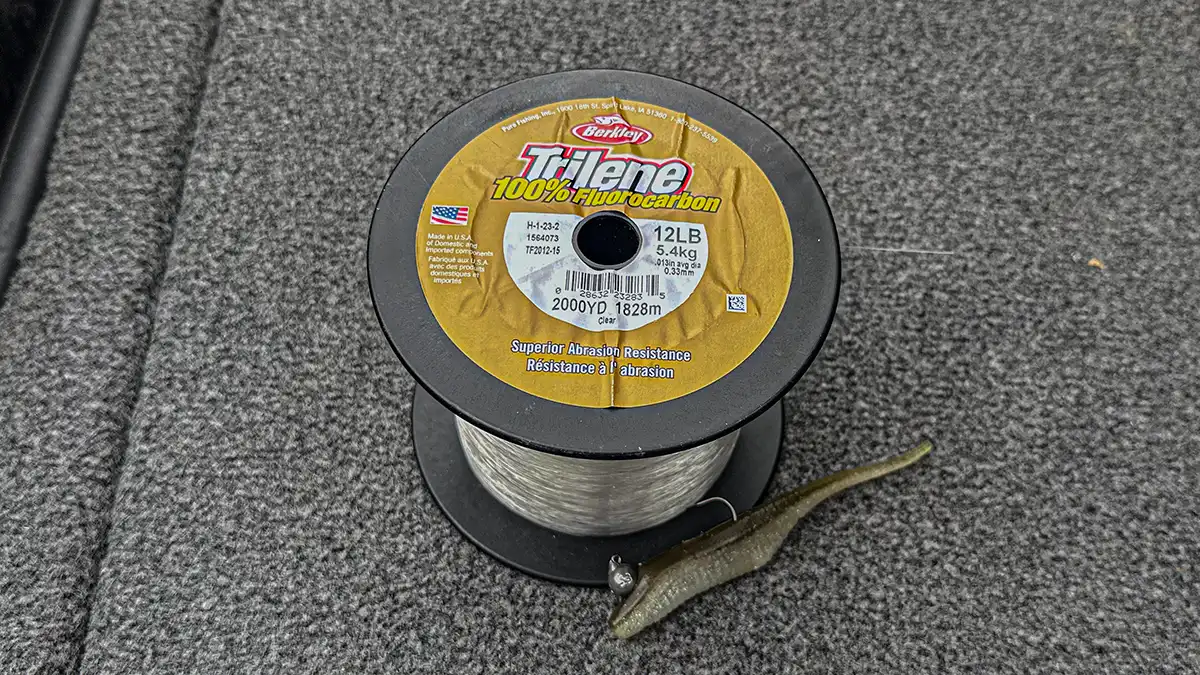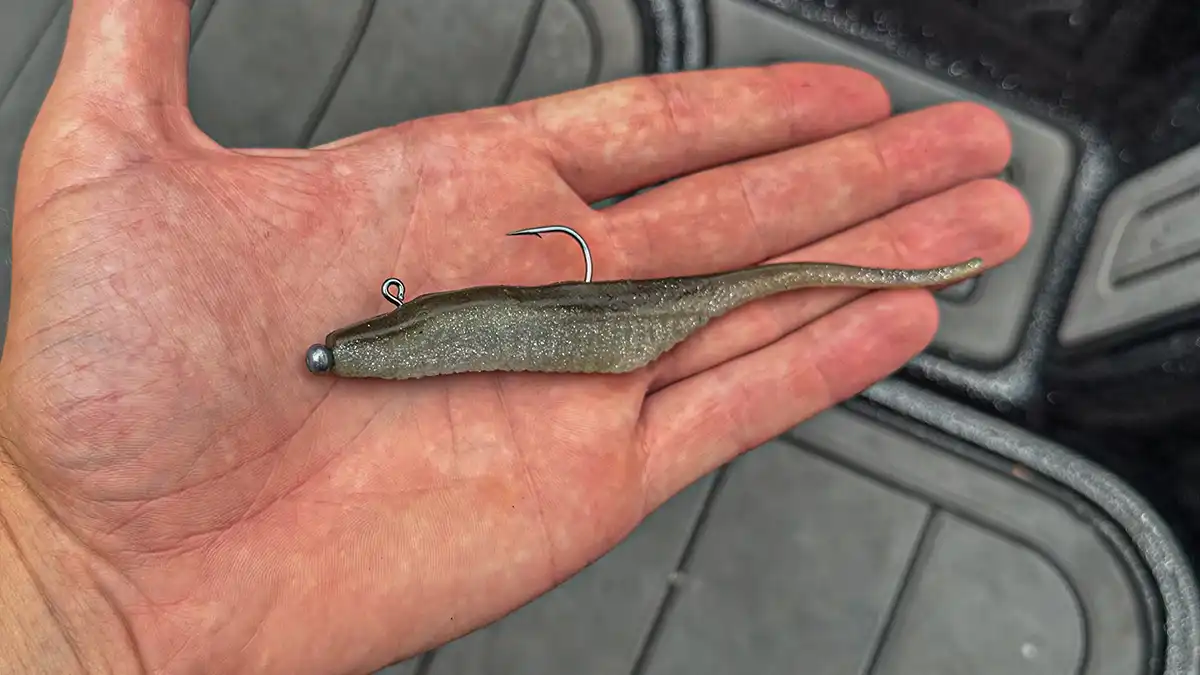Warning: Undefined variable $k in /home/nginx/domains/wired2fishcom.bigscoots-staging.com/public/wp-content/themes/understrap-child-0.6.0/functions.php on line 984
Warning: Undefined variable $k in /home/nginx/domains/wired2fishcom.bigscoots-staging.com/public/wp-content/themes/understrap-child-0.6.0/functions.php on line 987
It’s no secret that the jig head minnow has taken over the world of bass fishing. This style of lure doesn’t win every tournament, but you still see it being used in almost every professional bass fishing event across the country. This trend started a few years ago with both local and international anglers, but it didn’t really pick up steam until fairly recently. Bassmaster Elite events such as Lake Fork, Smith Lake and other prominent locations have all been won using a jig head minnow as well as other finesse-style baits.
However, the growing popularity of this lure has quickly educated fish, often making them much harder to catch. This has caused anglers to alter their techniques and rigging styles in order to gain an advantage over other competitors. I’m lucky enough to be close friends with a number of Bassmaster Elite and Opens anglers, and I’ve picked their brains on some of the newest jig and minnow modifications. This feature highlights some of the most under the radar jig and minnow modifications that the pros aren’t talking about.

RIGGING
The traditional jig and minnow rig consists of a ball head jig and a soft plastic minnow threaded on from collar to tail. While this still works wonders, there’s a couple new ways to rig this bait that could get you a few extra bites. The first consists of a weightless rig and a nail weight. This lure is referred to as a “Hover Rig,” and it gives your jig and minnow a unique action that isn’t achievable with the traditional rigging style.
With this style, you insert the hook starting right behind the head of the bait with exiting the backend in a similar location as the traditional jig head rig. Next, insert a nail weight into the head of your soft plastic completing your Hover rig. This rigging style allows the bait to work in a similar fashion to a Neko rig. The bait will flex between the head and hook with a slight twitch of your rod tip creating a super unique action. This is great for targeting bottom dwelling bass that are feeding on shad. You can both hop this bait along the bottom or fish it like a traditional jig and minnow, creating a new use for an already productive bait.
The next rigging technique is one that’s far less talked about but just as productive. Theres no specific name for this style of rigging, however it adds tons of action to what would be a fairly lifeless presentation. This modification consists of inserting a traditional jig head further back in the soft plastic minnow. You then exit the back end of your minnow like normal, creating an artificial bill. This bill creates an enhanced rolling action that isn’t achievable with a traditional jig and minnow. The concept is similar to that of a crankbait, the bill moves water as it moves through the water column causing the bait to rock. This is perfect for imitating wounded baitfish and other easy meals bass love to capitalize on.
I’ve tested both of these rigs over the last several months and I can safely say they both catch their fair share of bass. I prefer to throw the Hover rig whenever I’m fishing for bass that position along the bottom, and I prefer to throw the other when fishing for suspended fish. The hopping action of the Hover Rig closely imitates bluegill, shad and other types of forage that may feed along the bottom. While the second style of rigging is perfect for imitating herring or other types of wounded baitfish that could provide bass with an easy meal.

BILLS
On the topic of bills, there are many soft plastic jerkbaits that come standard with a bill for added action. Some of these baits include the Jackall Drift Fry and the Deps Frilled Shad. While I love the original action on both of these baits, many anglers trim and alter the bills to achieve their own desired action. Anglers such as Kyoya Fujita are known for this type of modification, and they’ve made a lot of money doing so.
One notable event where this modification played was the Bassmaster Elite Event on Lake Champlain. Kyoya Fujita ended up winning this event on a 5.2-inch Jackall RV Revoltage Drift Fry on an 1/8-ounce head. The Drift Fry was initially designed to be reeled in with little to no action from your rod tip. The bill creates a natural swimming action that doesn’t require any added effort from the angler. While this action is undoubtably productive, Fujita was fishing this bait exceedingly slow. He ended up trimming the bill which created a natural rolling action that mimicked a wounded baitfish. Myself along with numerous other anglers have since practiced this technique, and let me tell you it catches fish. This is a great way to generate your own unique action that’s different from other anglers.

LEADER LENGTH
A jig and minnow is typically fished in clear water scenarios, therefor you would assume you need an extra long leader. I’ve fished a jig and minnow for the last several years, and throughout that time I’ve always used a 6 to 8-foot fluorocarbon leader. I did this with the intention of putting as much distance between my bait and high visibility braided fishing line as possible. However, recently I learned that the majority of skilled jig and minnow fisherman use a 1 to 3-foot leader. While this may sound counter productive, it’s all about giving the bait as much action as possible.
Braided fishing line has little to no stretch, while fluorocarbon has a noticeable amount. This stretch decreases the action in your bait by dampening the twitches of your rod tip. Therefor anglers have begun using shorter leaders to eliminate this stretch. This makes your bait far more responsive allowing you better work your minnow based on the fishes reaction. I’ve been messing with this technique for the last several months, and I’ve noticed that fish aren’t as concerned with the braid as I thought they’d be. I also learned that you need to loosen your drag whenever you use a shorter leader. The lack of stretch can put too much strain on your leader knot during a hook set, ultimately causing your line to break if your drag is too tight.

LINE SIZE
Last but certainly not least, line size has changed dramatically since anglers began throwing a jig and minnow. Initially anglers thought that light line was crucial in finding success with this bait. It was thought that the thinner diameter would help coax bass into biting your bait. While this may be true, it makes getting them in the boat far more difficult. Furthermore, this lighter lines has more stretch compared to a slightly thicker line, ultimately effecting the baits action.
Numerous anglers who are famous for throwing a jig and minnow horse their fish to the boat, often boat flipping them. I asked some of these anglers the reasoning behind their line size, and they responded that they would rather throw 12-pound line and get them in the boat than take their chances with 6 or 8-pound line. They also stated that this thicker line allows the bait to roll harder when twitched, ultimately creating a more efficient and responsive lure.
While I still use light line in certain situations, I understand the appeal of a stronger line and have since begun experimenting with it. Regardless of what you and I think however, these modifications have worked wonders for a number of professional bass fisherman. Taking advantage of these under the radar modification is a great way to get a few extra bites the next time you’re throwing a jig and minnow.












